What to do with lilies after they have faded?
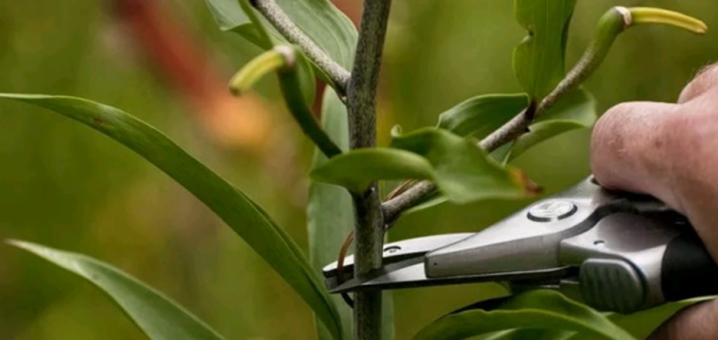
Many owners of summer cottages are thinking about what to do with lilies that have faded and no longer please with their magical beauty. It turns out that there is no need to rush with pruning, otherwise next year you may be left without beautiful flowers, which are a real decoration of the garden.
Pruning rules
The question of whether it is possible to cut lilies after their flowering, and how this can affect the health of flowers, worries gardeners quite often. But even after the end of flowering, the growing season of this culture continues, and this natural process should not be disturbed. If the bulbs of the plant are needed to get beautiful and large flowers in the coming year, you cannot cut the flowers when they fade.
It is quite understandable that bare green stems without peduncles do not decorate the flower bed too much, and an irresistible desire arises to get rid of them in order to restore a harmonious look of the garden... But just at this time, the plant accumulates the necessary substances for nutrition, and it does this not only through the roots, but also with the help of the aboveground part, which is involved in the processing of solar energy.
This applies to both the stems and the leaves of the lily. The flower accumulates vital elements through photosynthesis to prepare for the cold winter season and to ensure the maturation of the bulbs. If you cut off the green part, then the development of the bulb stops, and then stops altogether, but this part of the flower is necessary for flowering, wintering, and the formation of children.

In order not to harm the plant, you need to know the rules for pruning.
- It is necessary to remove wilted flowers, even if a seed pod begins to form on them, so that the seeds do not take away the strength and energy of the plant. Although seed propagation is relevant for some varieties of the plant, it is mainly used to breed new species of lilies.
- Pruning is done with a sharp, previously disinfected knife or pruning shears, cutting obliquely so that moisture from rain or dew does not accumulate on the cut, as this can lead to rot.
- Usually in September, the stem turns yellow and gradually dries up, after which it can be removed. The height of the shoot trimming is at least 10-15 cm, at least experts recommend adhering to this parameter.
- If you need to cut a flower for a bouquet, then a bush is chosen that has a large bulb, on which there are 5-7 flowers. You need to cut the stem just below the middle, so the lily will quickly recover.

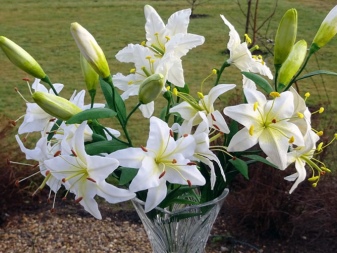
One thing can be said about the unsightly appearance of the culture after flowering - the plant must immediately choose the right permanent place. The best frame for a flower will be small shrub varieties of thuja, juniper, dwarf Christmas trees, as well as fern and tall herbaceous plants. Marigolds and pansies, nasturtium and petunias look good next to the lily. After flowering, other garden crops will distract attention from the bare stems, and the beautiful landscape of the site will not be disturbed.
How to fertilize?
After flowering, lilies are weakened, and caring for them requires the creation of favorable conditions for the restoration of strength and the accumulation of nutrients - this is necessary for successful wintering. The soil near the plants must be fertilized with compounds with a high content of phosphorus and potassium, they are most suitable for the autumn season.
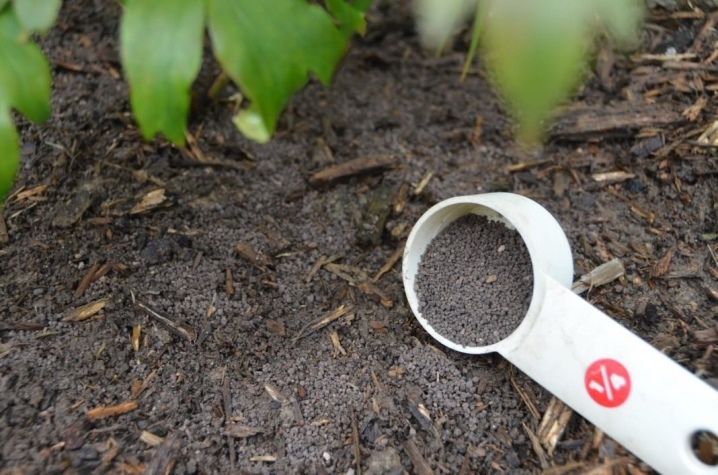
Consider the optimal feeding after flowering.
- "Superphosphate" - a tool that helps flowers to economically use moisture, prevents the appearance of fungal diseases, and is also necessary for the plant to survive freezing temperatures in winter. For 1 sq. m requires 25 g of the drug.
- "Potassium sulfate" - a composition with an increased level of potassium increases the immunity of flowers, thanks to which the nutrients delivered by the roots are absorbed faster by the bulbs. You only need 10-15 g of a substance for feeding the land on a plot of 1 sq. m.
- The same effect has "Potassium monophosphate", which, due to its neutral acidity, can be used in combination with other fertilizers. With the help of diluted powder (25 g + 10 l of water per 1 sq. M), it is possible to carry out foliar feeding.
- Also, lilies after flowering need organic fertilizers. - humus or compost, but only in rotten form (a bucket of fertilizer is taken for 1 sq. M.). Fresh organic matter is not used so as not to cause burns and death of the plant.
- Besides, for lilies, the introduction of special means is favorableintended only for bulbous crops.




Plants must be constantly looked after until October, and although after flowering watering should not be abundant, the ground under the plant continues to be irrigated, and very carefully so that water does not get on the leaves and stem. Fertilization is usually combined with watering, weeding and loosening. Since the adventitious roots of the culture are located high, only the top layer of the soil can be loosened, moreover, very carefully.
Digging out the bulbs
Usually, lily bulbs are dug up when babies are formed on them, this happens 3-5 years after planting in the garden. For more delicate species, such as pipe lilies, digging is a mandatory annual procedure. Frost-resistant hybrid varieties can be left untouched for 8-10 years, and after each wintering they will continue to bloom.
Basically, gardeners carry out such work because of the strong growth of the culture, when it is in one place for a long time. Digging is carried out in autumn, in September, they try to extract white flowers from the ground and replant at the end of summer, but only if 3-4 weeks have passed after flowering.
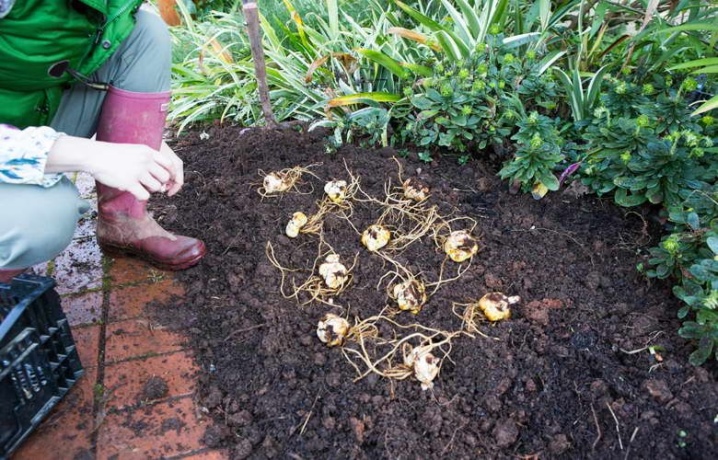
When digging, a certain sequence of actions is observed.
- The bulb is removed from the ground together with the stem, which should already be pruned. This is done carefully so as not to damage the root. After that, you need to shake off the ground from it.
- Then the bulbs are sorted: deformed plants with signs of stains and rot are selected, if necessary, the defects are cut off with a disinfected knife.
- At the same time, overgrown lily bushes are planted. New shoots are separated from the main large nest - small daughter bulbs.
- To prevent plant diseases, planting material should be kept in a solution of potassium permanganate for 1 hour.
- Dry the bulbs in natural conditions, away from sunlight. Choose a cool place for storage.
If you decide to plant lilies in the fall, then you should dig up the bulbs in the last days of August. Later, in September, you can get them out of the ground when planting is scheduled for spring. But since it can be difficult to keep the bulbs viable until spring, many transplant lilies immediately after digging them up.
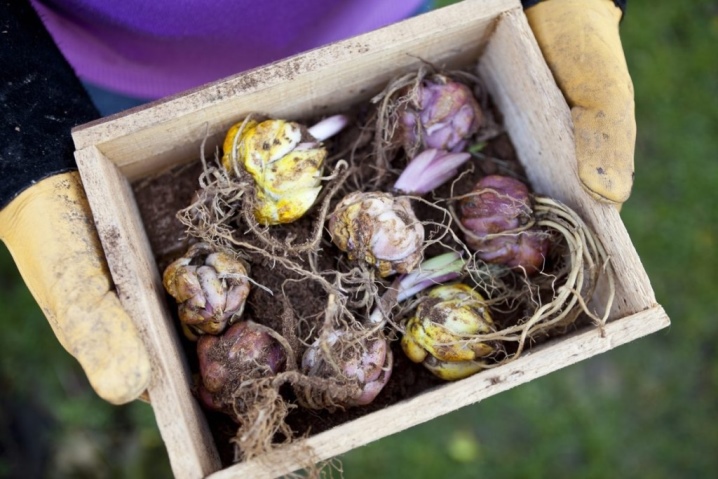
Winter preparation and storage
You can save the bulbs at home until spring planting by properly preparing and placing them. After complete drying, they are rolled in wood ash, but processing with dry antifungal powder and wrapping each bulb in paper or 2 layers of newspaper is also allowed. Then the material is placed in a wooden box with ventilation perforations, sprinkled on top of wood shavings or overlaid with moss.
There are other storage methods as well.
- Lilies can be placed in a polyethylene bag with peat, the layer of which is at least 15 cm.The bulbs are placed 10 cm apart and must not touch each other. The bag is tied, making several holes in it for ventilation, and placed in a cardboard box.
- Plants are planted in peat containers or flowerpots. This method is practical: in spring, in warm weather, you need to take the container to a lighted place and water the ground so that the bulbs grow.
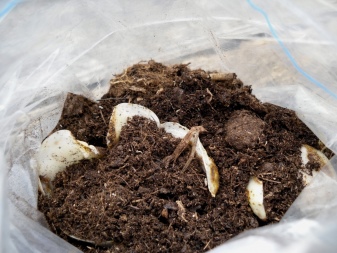
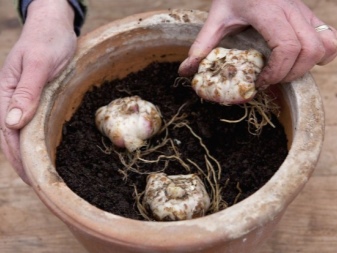
At home, boxes and containers are best placed in rooms such as a cellar or basement, since storage requires a temperature of 0 to +4 degrees.
During storage, it is important to adhere to the optimal temperature regime, make sure that the air is not too humid - because of this, the bulbs can rot. But the indoor climate should not be dry either - this causes dehydration and shrinkage of plants. Regular airing is a guarantee that the lilies will not get sick and mold will not appear on them. Therefore, it is not recommended to store the bulbs in the refrigerator, as part of the planting material may be irretrievably damaged.
The plants left in the ground have enough 10-15 cm of snow to survive the cold. But with little snow winter, it is important to use mulching with coniferous spruce branches, foliage, peat. The coating is removed when the soil thaws.
Hybrid and Asian varieties of lilies require special storage. A moat is dug in the garden, at the bottom of which drainage material is placed. For it, you need to make a lid and lay out the inner space with boards. The cooked bulbs in bags or boxes are placed in a trench and transferred with bags of water. This helps to mitigate the temperature drops inside the shelter. The storage is closed with a film, and on top - with a lid, on which spruce soil, coniferous branches and cardboard are poured.
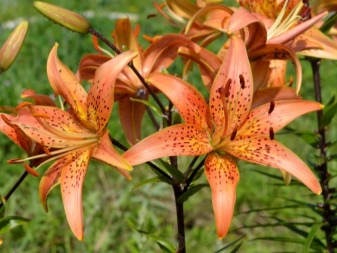
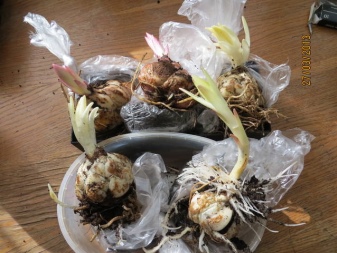
How to transplant?
Autumn transplanting in open ground is considered more preferable due to the dormant period of the plant, but spring planting after winter storage is also allowed. A place for a flower bed is chosen in an open area with good lighting, no drafts, however, partial shading will not prevent the plant from developing. But the shade from dense shrubs and trees with a large crown, as well as planting in wetlands can cause thinning and stretching of young shoots in height, in addition, flowering in this case occurs much later.
After the lilies have bloomed, the shoots of the flowers are cut off, and the bulbs are dug up, processed and dried, they can be planted in the soil.
- The ground in the garden should already be prepared, free of weeds and dug 30 cm deep. Peat or humus is introduced into the sandy soil, sand is added to the heavy, clay soil.
- The bulbs must be planted at intervals of 20-25 cm, therefore, several holes are made, observing this distance. The depth of the holes depends on the size of the planting material and varies from 5 cm to 25 cm.
- Coarse sand serves as drainage for the pits: the bulb is placed directly on it, sprinkling its roots with the same sand, and only then - with a soil substrate. It is important that after planting the lily is completely submerged in the ground, and there is another 4-5 cm of soil above it.
- The surface of the soil must be leveled and a layer of a mixture of humus, sawdust and peat should be applied to it: mulching will ensure the maintenance of moisture and protection from the cold.
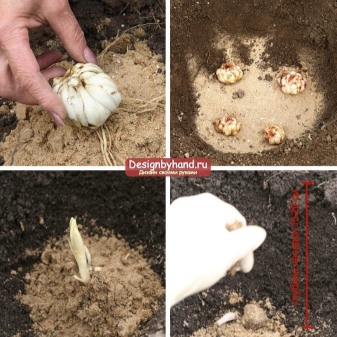
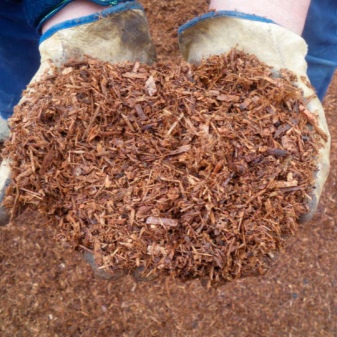
Transplanting lilies in the country is necessary not only because certain varieties do not tolerate frost. Plants tend to grow, their aerial part thickens and grows, and the flowers, unfortunately, become smaller. To make a flower bed with lilies in the country look attractive, you need to separate the daughter bulbs in a timely manner and transplant them to a new place.
Taking care and proper care of lilies is a guarantee that the plants will successfully endure the cold period, and next year they will delight the gardener with lush flowering.
For information on how to properly prune a lily after flowering, see below.







































































































The comment was sent successfully.